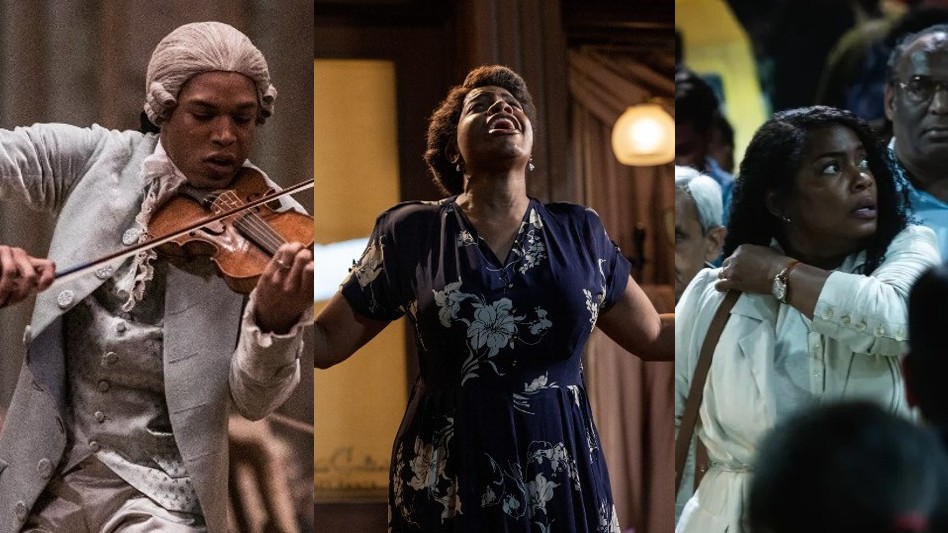
Composer Kris Bowers has been having a particularly busy year. It’s no surprise, since he’s been proving himself to be quite the Renaissance man, and that’s not just because he scored Steven William‘s period Chevalier. His other projects this year – Disney’s Haunted Mansion, the musical The Color Purple, and providing score for Ava Du Vernay‘s Origin – all show a diversity in composing and variety of instrumentation that’s rare.
On top of that, Bowers also directed the doc short, The Last Repair Shop, which won an award at the Critics Choice Documentary Awards just last month.
Probably Bowers’ most high-profile current project is the upcoming The Color Purple, directed by Blitz Bazawule (Beyoncé‘s Black is King), based on Alice Walker‘s novel and the hit Broadway musical with Fantasia Barrino and Danielle Brooks both reprising their stage characters and recently receiving Golden Globe nominations.
Also playing in select theaters is Ava DuVernay‘s Origin, which isn’t exactly an adaptation of Isabel Wilkerson‘s novel Caste, as much as it is a film telling how Wilkerson (as played by Aunjanue Ellis-Taylor) goes about exploring her thesis that became Caste.
Earlier in the year, Bowers also provided the score for Justin Simien‘s Haunted Mansion for Disney, as well as the score for Stephen Williams‘ Chevalier, which follows the journey of the unknown Black composer Joseph Bologne (as played by Kelvin Harrison Jr.) as he becomes the favorite artist of Marie Antoinette. (Below the Line previously had spoken with Michael Abels about that project and about Bowers.)
Below the Line had a chance to jump on Zoom with Bowers to talk to him about most of the projects he has scored this year, as well as The Last Repair Shop, which is very likely to get onto the doc shorts shortlist later this month.
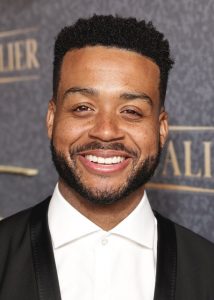
BTL: I’m curious about your background. Do you have a main instrument that you play? Did you have classical training? How did you go from being a musician to scoring film and television?
Bowers: Piano is my main instrument. I’ve been playing piano since I was four, and I studied. When I was a kid, my parents had me in both classical and jazz lessons, but I was much more focused on jazz most of my young life. I ended up going to Juilliard for jazz piano, but I also always knew that I wanted to be a film composer. I fell in love with film music pretty early on, so when I got to Juilliard, I almost like built out a minor in composition that doesn’t exist.
I basically found a private composition teacher. I found out what classes the composition students have to take and tried to take as many of those as I possibly could. Every time I had a recital, I would have a section of the concert that was a jazz ensemble plus a small chamber. For me, the work on learning how to orchestrate and all that stuff happened mostly in college. When I was in high school, I did some big band writing and things like that, but actual composition for an orchestral sense was in college.
Because I wanted to be a film composer since a young age, I talked about it a lot, and my first couple of scoring projects, were really just people that heard me talk about it. They were like, “I remember when we were kids, you talked about it a lot, and now I’m producing something, or somebody being my manager for a short while, she was like, “You talk about it so much. I’m gonna help you find your first film.” She found a director that was a friend of hers making a film that wanted a score that they felt I could.
A lot of those early projects and that transition was really just because of people giving me an opportunity, based on me not being able to shut up about wanting to be a film composer.
BTL: Where should we start with your amazing year? Do you maybe want to start with The Color Purple?
Bowers: We just went to the premiere last night, so that’s fresh in my mind for sure.
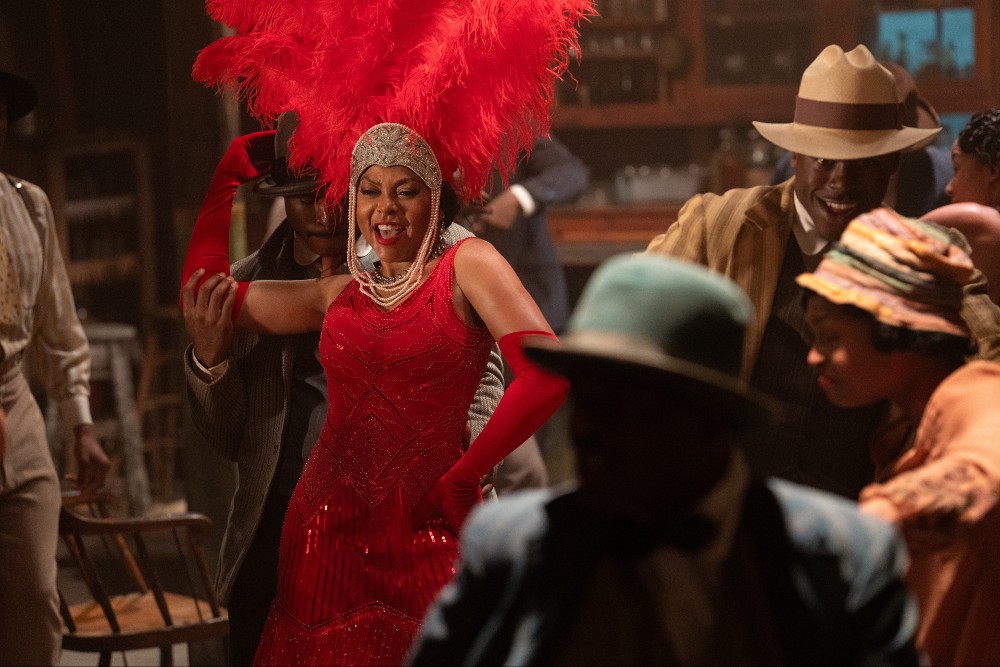
BTL: How do you start on a project like The Color Purple where you have to write score around the existing musical numbers?
Bowers: The thing about Blitz that’s so fascinating is that he is the one of the most intentional directors I’ve ever met. He brought me on several months before they started filming, which is pretty rare for the composer. Part of it is because I arranged a couple of the songs that had orchestral arrangements. He also brought me in, because he wanted me to be a part of the conversations around the songs, because he wanted me to see how they were reimagining them, like what they were doing production-wise, what were their references, and also for me to be intimately familiar with those melodies and those harmonies.
We knew that the score would need to be the glue, but the way that he was going to tell this story was also so grounded, that it really demanded for a score that can carry those moments that weren’t about singing. It was about these characters and their relationships and their individual moments. The first themes that I wrote were really almost my response to my familiarity with the songs. It was like, “Okay, I know that the way they’re approaching Shug, it’s all about jazz and the drums and that element. So I’m going to use drums in the thematic material for her.”
Or Celie, the shape of the first melodic melody that I wrote was inspired by the shape of one of her songs, but then at the same time, it had this chord progression that was mine, and then the themes became more about that chord progression than that melody that I had initially found. It was really about almost creating this series of tangents from the song, so that by the time we got to a theme or a piece of score, it was very clearly its own thing. But Blitz and I could always go back and say, “Here are the reasons why this exists, based on the songs.” I think being that intimately aware of the songs and their makeup really helped in that part of the process.
BTL: Were you involved with some of the pre-records, at least on the music side of things? I’m not sure how much they sang on set versus in the studio.
Bowers: Definitely a lot on site and a lot of pre-records. There’s a song called “What About Love?” that’s this full orchestral arrangement that I wrote, and then, I also did a bit of help on the arrangement for “I’m Here,” which is Celie’s big number at the end. There was one other piece that had a full orchestral arrangement that we recorded for pre-records, and they filmed, but we just decided it wasn’t really right for the film. There were a few pieces that I was actually a part of arranging.
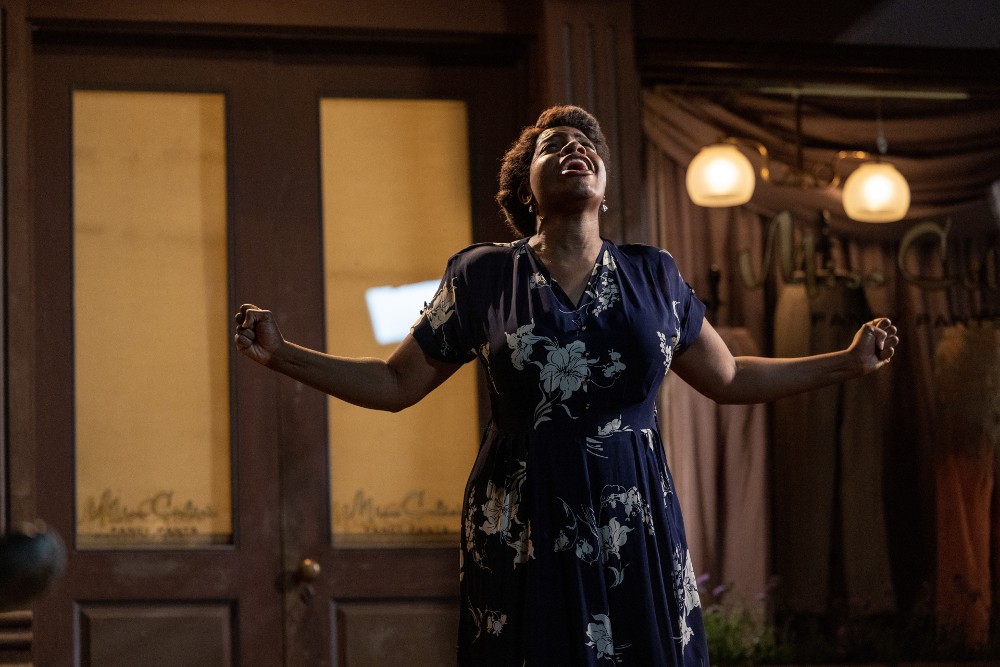
BTL: Does Blitz have a decent knowledge of music? I assumed he was just because he worked with Beyoncé.
Bowers: He was a rapper back in the day and a musician. He’s a guitar player. He’s a renaissance man. He’s a painter, he writes books, and he has multiple records. He toured for years, but all of our conversations were about emotion. He might talk to me about instrumentation a little bit, but he wasn’t like, “the minor chord here,” or is that specific. He’s so aware of musical references and so deep with references. Like for “What About Love?”, he was like, “Have you ever heard this Marvin Gaye record with big band and strings? I think we should cop some of that, look at that for influence.”
The other thing that I’ll say about Blitz that’s related but slightly tangential is that he demanded every department head, including myself, when you had your first meeting with him, you sat down and watched a two-hour version of the movie that was all hand-drawn storyboards that he did by himself, that he edited together himself. He hired voice actors to do the dialogue from the script, along with sound design that he found himself from YouTube and temp music he found from YouTube.
I remember watching this two-hour version of the movie and feeling emotional, and it was just like pencil sketches that he did by himself. That’s the level of specificity and intention that he brought to the project, which was pretty wild.
BTL: You’ve worked with Ava DuVernay and Justin Simien on a few projects, so how are they in terms of musical knowledge? Is it something where you discuss emotions and work with them that way?
Bowers: I think the emotion thing is the thing that always rings true with the two of them as well. They are so clear even on the complexity of emotion. This is not just happy or sad or nostalgic, it’s down to each section of the sequence. What the characters thinking, what they’re feeling, or also the juxtaposition of what we’re seeing on screen versus what we want the music to be telling us to feel. All that is always really clear with Justin and Ava as well.
What I also think is really fascinating is that we can all trust our emotional, visceral barometer to see whether or not something’s working. It’s pretty rare that I’m playing something for Justin, and he’s like, “I don’t think that’s right.” For the most part, Justin’s like, “Sounds great.” He trusts me a lot, but also, I don’t even know what it is, but his process has an openness in that way.
I think with Ava, we get granular in a beautiful way to figure out, “Okay, is this really making us feel the way we wanted to feel?” We’ll watch a scene, and she’s like, “This first 10 seconds is making me feel the way I’m supposed to feel, but then this little section, like, I don’t feel that way anymore. What’s happening there? How can we adjust that feeling?” It’s always about how feeling is projected through time, as it relates to the music but not talking about it in musical terms.
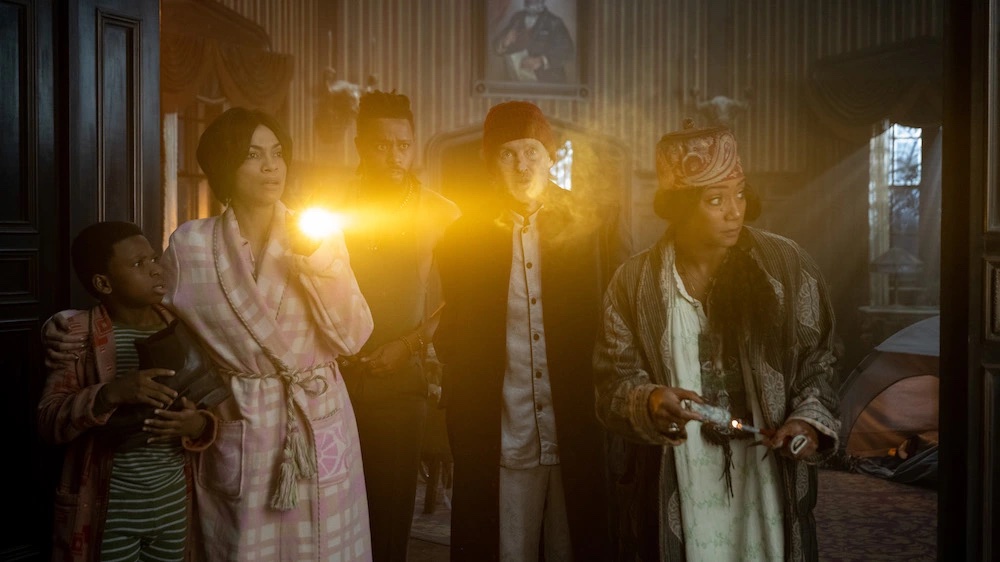
BTL: I really enjoyed the score for Justin’s Haunted Mansion. It’s an old school score with lots of fun action moments and horror, so was it just very natural for you to continue with Justin onto that after scoring his Dear White People series?
Bowers: 100%, just because we had established that trust where he knew that I knew exactly what he was going for. We had that language on Bad Hair, in terms of what horror movies he really likes and what scores he really likes. Justin really loves music and loves film music in that traditional way. His favorite horror films are the ones that use Penderecki and Ligeti for temp music or for the actual scores themselves, things like The Shining. Anything from that era of filmmaking, I feel is Justin’s bag when it comes to horror movies.
Because of that, we’re not looking for music to be just sound design-y. The way we approach it, it’s really looking for music to be melodic and emotional and big and sweeping and action-y. I feel like because we’ve talked a lot about that over the course of projects, that felt really clear for Haunted Mansion.
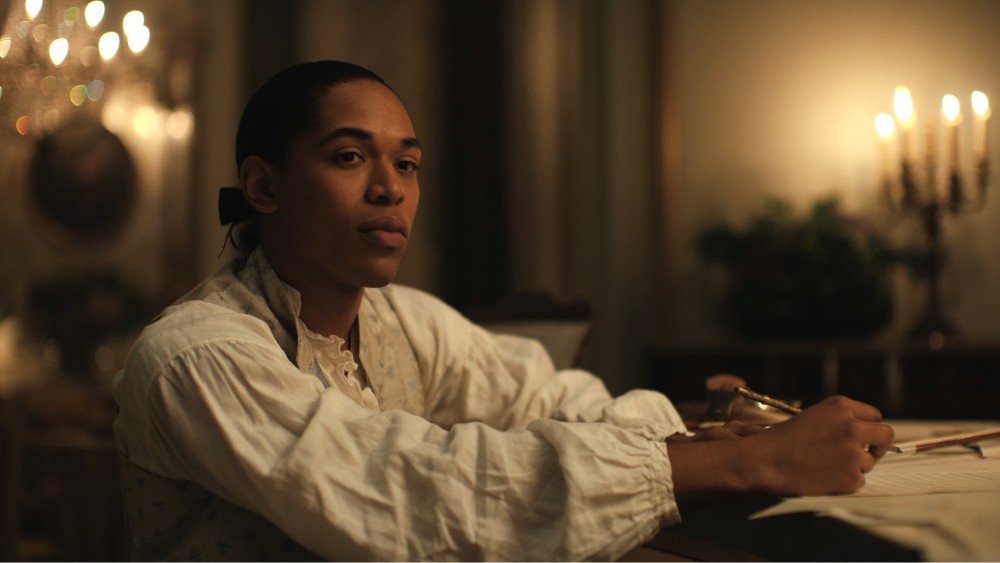
BTL: Chevalier has something in common with The Color Purple in that you’re composing your score around original music composed by Joseph Bologne, which is very specifically classical music from that era. How did his music influence the score you wrote?
Bowers: What was fun about that – and there definitely is a parallel with The Color Purple, because it was a similar process where I started by studying his music as deeply as possible, looking at all of his scores, looking at his violin writing and trying to see if he has tendencies or shapes that he tends to use, and then starting my themes based on that. Stephen Williams, the director, one of the first things he told me was that he wants the score to be connected to the man, not the clothes. His whole thing was that the score should not be reminding us of the time period as clearly as the on-camera music is. With Michael [Abels] doing an incredible job with all the representation of the on- camera stuff, Steven wanted the score to have this other personality to it, where it was more about the internal side of Joseph and also trying to match the modernity that he had for that time, with what we feel today.
A lot of that was writing things, and everything in the score is generated from an organic source, even though it sounds synthetic. A lot of that is having a collection of violinists playing these phrases, and then turning the reverb all the way up and using that reverb as a pad, or having detuned cello or detuned violin or using harpsichord and manipulating it and playing it like a percussion instrument and doing prepared harpsichord.
A lot of that score was deconstructing a lot of the material from that time period, and writing music that matched the emotions and the internal journey of these characters. Then making it was coming from the source of Joseph’s music as far as inspiration. To me, it’s why it fits so well with his music that Michael did. We weren’t able to collaborate together, but that process of making sure that everything I was writing was in some way inspired by Joseph made it so that those two things complemented each other.

BTL: You’ve worked with Ava on her TV series, and Origin was her first feature that you scored. What did she tell you about it when she approached you to write the score? What did she want you to bring to the sonic portion of the film?
Bowers: For me, that book [Caste] is incredibly important, and I’m excited for people to see the film, to start having conversations about what the film gets to the core of. Our first conversation was about making sure the score underlying the interconnectedness of these cultures, while at the same time truly honoring those cultures. Also, the other part of it was recognizing these human stories. I think your reaction to the strings, it’s one of those things where I didn’t really care about being cool with this one, because it’s more just the clarity of what the emotion is for that story in these communities.
For me, making sure that people that come from that community feel seen and heard and felt and honored and all that. Part of the research part of it, just like any other project, I do a lot of digging into the music written during the Holocaust and music written in concentration camps, which is another thing that influenced the instrumentation. For me, it was fascinating to even think about the fact that there was music created in that environment.
The necessity for small ensembles, for obvious reasons, led to the usage of soloists on top of the orchestra throughout it. And then, for the Dalit community, I spoke with Dalit musicians about the traditions there and found polyrhythms that exist in traditional Dolit music. A lot of the polyrhythmic music that’s happening throughout the film, even before we get to India, is based on those polyrhythms. Really, it was like, “How can I go deep to find bits of inspiration from these cultures, and then develop a palette that feels like it’s going to underline not only the interconnectedness of all of it, but also the emotion of it?”
I remember talking to Ava in the beginning. There are some sound design-y elements, like the caste sound. Whenever we hear or see somebody dealing with the caste in action, there’s this sound that was generated from recording literally sounds of a groaning house and like musicians playing groaning sounds on their instruments. There’s this low groan that we hear from the very beginning, when [George Zimmerman] pulls up on Trayvon [Martin], and it’s throughout the film. I was pitching that to her in our first meeting, and she was like, “Kris, what about the people in this? There are love stories here. We have to make sure that the heart of this is felt, and that being that the first and foremost thing.”
That’s really how we landed on this palette, and at the same time, trying to find ways to make sure that it deeply got into those cultures and into this idea of caste, but at the same time was going to be something that would be a palette that could help unify everything. Opposed to anything else that could start to make it feel like there’s this clear differentiation between each culture, which goes against what she’s saying in the book and in the film.
BTL: Do you use MIDI in your writing process?
Bowers: With the actual score itself, there’s very little. With Origin, there’s maybe one synth sound, and a couple of cues that’s MIDI-generated. Everything else you’re hearing is all organic material that’s been manipulated or reworked. For The Color Purple, it’s all organic, there’s even certain sounds that are detuned banjo, and all that kind of stuff. There’s no MIDI at all. I use MIDI, obviously, with writing, but I try not to have it be anything that ends up being in there. There are really great MIDI libraries and samples and things like that, but for me, it’s really about how rich you can get from something being organically-generated.
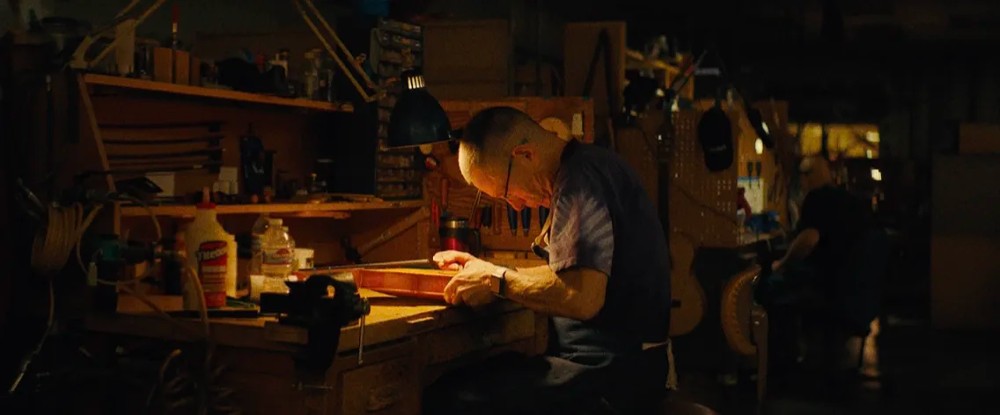
BTL: Lastly, let’s talk about your latest short, The Last Repair Shop. How did you first meet Ben Proudfoot and start working with him in the documentary realm?
Bowers: We met through a music contractor in L.A. named Peter Rotter. He was a mentor of both of ours. Peter has contracted pretty most of the movies in Hollywood over the last 20 years or more, and he’s been a mentor of mine. I wanted to make a short film myself just to start getting into that skillset. I was really curious about it and starting to work on writing and studying and creating this auto-didactic study course for me to learn how to direct.
I wrote the script, and I was like, “I’m gonna make this short film.” Peter was like, “Well, you have to meet Ben Proudfoot.” Ben actually lent me the cameras for that and helped me figure out how to put a crew together. We did all our post-production at Ben’s company, Breakwater. That was really like a self-funded student film essentially in terms of what I created, but that started our relationship. A few years later, he got commissioned to make a piece about LA and music, so he reached out to me about the piece I was writing for AYS to be at Disney Hall. I just happened to tell him about my grandfather, and that’s how Concerto happened.
While we were making Concerto, the other piece that he was looking into about the L.A. and music was the repair shop. When we were finishing Concerto, he was like, “Do you know about this repair shop? I know you went to LAUSD, have you ever heard of it?” I hadn’t, so he invited me to come down, and I was just so blown away by this massive, magical place that only 10 people are working in to make sure that tens of thousands of instruments are being fixed.
Going back to how important the instruments in my schools were, and how I never thought of how they were kept in shape until that moment, made me feel like I need to be a part of it. We started back then, and we worked with our editor, Nick Wright, to put together a cut of just the repair people, and then, we went back and decided to film the kids. We did that, and we decided to do that final end credit sequence. Peter Rotter actually helped us put together that orchestra of alumni from LAUSD from seven to 70 all in the same room together. That was the last thing we filmed before we finished the cut.
The Color Purple will open nationwide on Christmas Day, while Origin opened last weekend in New York and L.A, and will be nationwide on Jan. 19. Haunted Mansion can be streamed via Disney+, while Chevalier can be streamed on Hulu.





